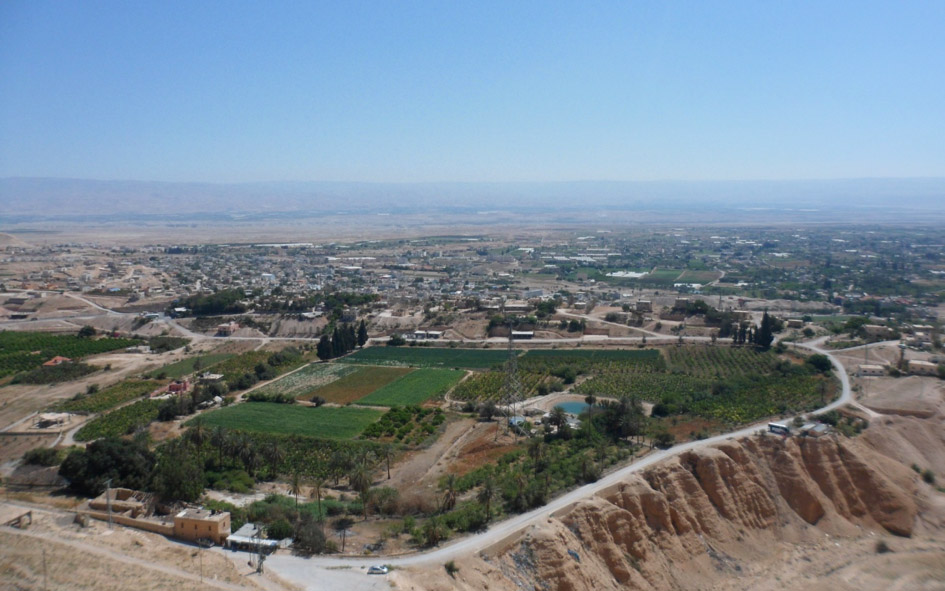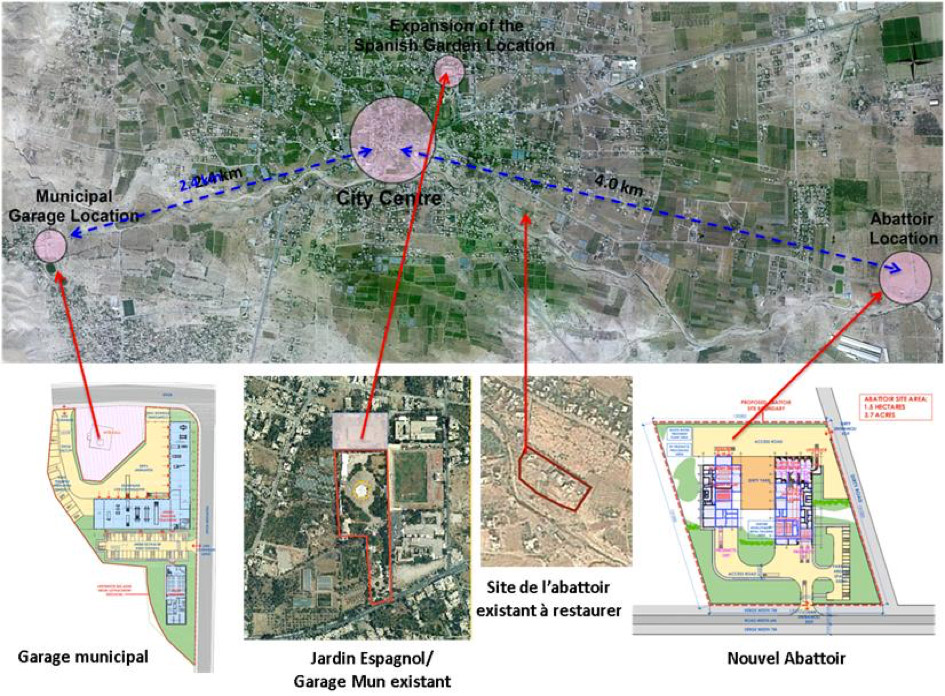Jéricho, un projet de régénération urbaine aux multiples atouts pour ses habitants et son économie
Afin de dynamiser le développement économique, l’Initiative pour le Financement de Projets Urbains – UPFI – s’engage aux côtés de la Municipalité de Jéricho pour rénover des installations stratégiques liées aux activités agraires et au tourisme, moteurs de l’économie locale.
La relocalisation de ces équipements à fortes nuisances urbaines dans des zones peu résidentielles permettra alors de valoriser les terrains municipaux du centre-ville afin d’agrandir les espaces publics ouverts à tous.
Jéricho, située sur la rive ouest du Jourdain en Cisjordanie, est l’une des plus vieilles cités du monde. Principal pôle urbain de la vallée du Jourdain, une région principalement agraire, la ville plusieurs fois millénaire, joue un rôle crucial dans le développement économique du gouvernorat de Jéricho.
La ville de Jéricho doit aujourd’hui faire face à des défis urbains propres à son statut d’unique ville du gouvernorat, hébergeant 50 000 habitants, soit près de la moitié de la population du gouvernorat.
Le Conseil municipal qui dirige la ville depuis 1930, est donc un acteur majeur responsable de nombreux services essentiels au bien-être des habitants tels que l’accès à l’eau potable, la collecte des déchets solides. L’action municipale tente par ses actions de faciliter le développement économique de son territoire à travers une maîtrise optimisée du foncier disponible et l’amélioration des infrastructures clefs indispensables au bon fonctionnement de la ville.

Vue sur Jéricho depuis le Mont de la Tentation
©Unité de Gestion de Projets pour l’Agence française de développement
Enregistrer
Enregistrer
Enregistrer
Enregistrer
Afin de dynamiser le développement économique du gouvernorat, la municipalité de Jéricho a décidé de revitaliser son centre urbain et de rénover des installations et des espaces publics stratégiques liés aux activités agraires et au tourisme interne, moteurs de l’économie locale.
C’est à ce titre que la Municipalité a décidé, dans le cadre de son Plan d’Investissement pour le Développement Stratégique 2012-2016, de lancer le projet UPFI-Jéricho suivant deux axes qui permettront d’une part de moderniser les installations essentielles au développement et au fonctionnement de la ville et, d’autre part, de revitaliser le centre-ville en créant de nouveaux espaces publics sur les emprises foncières libérées.
Pour la modernisation des installations, il s’agit, en premier lieu, de relocaliser et construire un nouvel abattoir conforme aux normes hygiéniques, sanitaires et environnementales dont l’exploitation permettra de répondre à la consommation citadine de poulets, bœufs, moutons et chèvres issus de la filière locale. Cette construction permettra de remplacer l’actuel abattoir municipal qui ne respecte pas les normes hygiéniques et environnementales, posant de sérieux problèmes tant de santé pour les habitants que de pollution pour l’environnement de Jéricho et ses alentours.
La modernisation des services comprend également la relocalisation d’un nouveau garage municipal dans la périphérie de la ville qui permettra d’entreposer, entretenir et réparer les véhicules de voirie, de collecte des déchets et autres travaux essentiels à la ville. Ce nouveau garage municipal permettra donc d’assurer le bon maintien d’équipements cruciaux pour le fonctionnement de la ville et la réalisation des activités urbaines de la Municipalité de Jéricho.
C’est par la réhabilitation des terrains libérés au centre-ville que la municipalité développera le second axe du projet UPFI-Jéricho. L’agrandissement du Parc Municipal permettra ainsi de créer un nouvel espace vert ouvert à tous dédié à la relaxation et aux promenades familiales. Ces travaux viennent compléter les activités sportives et le petit parc d’attraction déjà implantés dans le Jardin adjacent.
La municipalité de Jéricho est le pivot central de cette régénération urbaine, et ce, dès la phase d’identification du projet en 2012. Collaborant avec l’ensemble des parties prenantes engagées à ses côtés, notamment les institutions et partenaires de l’initiative UPFI, la ville a aussi construit des collaborations régionales avec le Fond de Développement et Financement Municipal (Municipal Development and Lending Fund) et la Société Arabe de Développement (Arab Development Society). Ces partenariats permettront de mettre en œuvre ce projet urbain élaboré en concertation avec les organisations de la société civile, et notamment les groupements d’éleveurs et bouchers, utilisateurs de l’abattoir, et, surtout, avec ses propres habitants, bénéficiaires in fine du projet.

Localisation du projet multi sites de régénération urbaine de Jéricho
©Association Internationale de Développement Urbain pour l’Agence française de développement
L’année 2015 a marqué pour le projet UPFI-Jéricho, le passage à la phase d’étude de faisabilité afin d’assurer l’assistance technique auprès de la municipalité de Jéricho.
Cette étude consistait à réaliser un travail d’analyse approfondie du projet urbain et à appuyer la municipalité dans l’élaboration des documents stratégiques et opérationnels de sa mise en œuvre.
Validé par le commanditaire, le rapport final de l’étude a ainsi permis de confirmer les axes d’intervention du projet et de préparer les dossiers d’appel d’offres des travaux à réaliser. Les investissements prévus dans le cadre de ce projet sont accompagnés d’un programme d’assistance technique afin de renforcer les capacités de gestion sanitaire, tout en favorisant l’implication du secteur privé dans la filière viande.
Fin 2021, le garage est construit et en service et les deux autres marchés de travaux vont débuter sous peu. Les activités de renforcement de capacité des acteurs de la filière auront lieu en parallèle.
Enregistrer
Enregistrer
|
|
|
|
En mai 2016, la mission d’assistance technique et d’étude de faisabilité menée auprès de la municipalité de Jéricho a été prolongée afin d’approfondir, notamment, l’analyse des impacts environnementaux du projet UPFI. Découvrez l’intégralité du projet de régénération multi-sites de Jéricho.